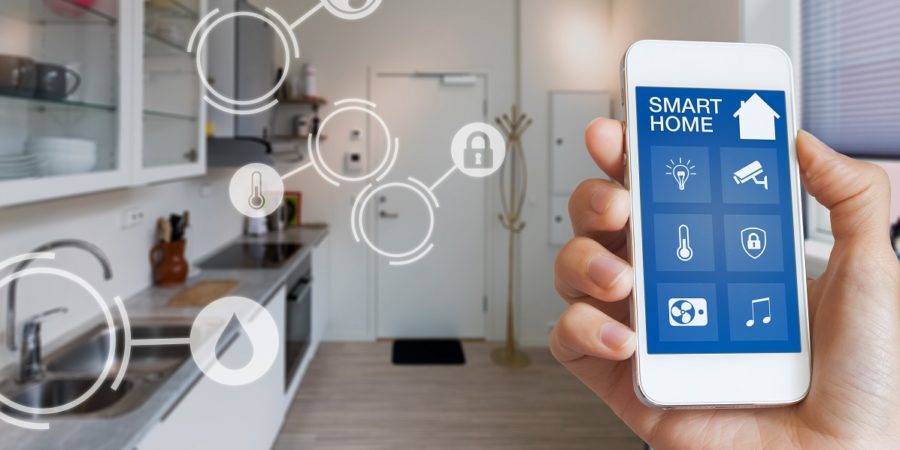
Commercial
4 Essential Components of an IoT Ecosystem
Written by: Parcel Pending
4 Min Read
Published: August 24, 2022
Updated: March 31, 2023
An Internet of Things (IoT) ecosystem is an interconnected network of smart devices that leverages embedded systems – i.e., sensors, processors, communication hardware – to gather, deliver, and act on data they collect from their environments.
The various components of industrial IoT ecosystems – i.e., sensors and actuators, connectivity, IoT cloud, IoT analytics and data management, physical devices and interface – enable consumers, governments, and businesses to connect to their IoT device.
What is IoT technology and how can it improve the employee experience?
IoT connects software, smart devices, and things, in addition to sharing data, allowing communication, and enabling action/interaction through machine learning and automation.
In a corporate setting, an IoT device or IoT network can help enhance employee performance and productivity. For example, using their smart devices, employees can quickly join meetings from anywhere, while remote teams can use cloud-based solutions to collaborate with in-office workers in a digital workplace, enabling them to complete projects from various locations.
In addition, a smart lighting system can help keep employees focused and energized, and smart standing desks can track the number of hours employees spend sitting at their desks working, prompting them to stand at regular intervals.
IoT can also help with parking, which can be a huge headache and waste of time for employees working in the corporate sector. Smart parking apps can leverage an IoT sensor (or multiple sensors) to direct employees to empty parking spaces, saving time and eliminating the hassle of searching for a space.
Connectivity
An IoT security system for access control offers employees a convenient, secure way to access their buildings. A connected device (or ecosystem of connected devices), including card readers, locks, and biometric systems, enables employees to enter buildings or offices without ID cards while still keeping intruders out.
Additionally, multiple sensors measuring occupancy can enable companies to optimize energy consumption in their offices. For example, a smart lighting IoT system enables facilities managers to program the lights to turn off or dim on sunny days and remain on when cloudy. They can also schedule the lights to shut off automatically when everyone has left for the night, as well as adjust the heat and air conditioning according to the weather.
This type of connectivity can benefit existing buildings because companies can upgrade one room at a time and continue to expand the system as their budget allows.
An IoT solution such as a Wi-Fi-connected scanner can duplicate and send scanned documents to employees’ computers and tablets as well as a shared document cloud, while an IoT application for wayfinding can help employees and visitors more quickly navigate unfamiliar buildings. An IoT application (and its data) can also help an employee quickly locate a colleague, an open meeting room for teamwork sessions, and find a conference room with the necessary innovative office technology, such as video conferencing.
Process automation
An IoT (Internet of Things) ecosystem allows organizations to simplify and automate routine, manual processes, such as invoicing and customer support, enabling employees and managers to focus on more productive activities and get more work done more quickly with fewer resources while lessening the chances for human error.
Managers can use wireless sensors and IoT technology to monitor employees and collect data about the flexible office space, including occupancy and utilization — IoT data they can use to determine the areas of the office where employees prefer to work. They can then create workspaces in those areas and incorporate it into their corporate office design to ensure workers are productive and happy.
A smart device connected in an IoT ecosystem can also monitor indoor air pollution and detect dangerous chemicals and gas leaks in the workplace.
Accessibility
To make life convenient for employees, organizations should also consider install an IoT solution such as smart electronic locker solutions that can adapt to the changing business environment. Lockers can help companies transfer documents, badges, laptops, and other physical resources safely and securely between departments without requiring direct contact. Businesses can also use a smart parcel locker solution for no-contact package deliveries.
Employees receive instant delivery notifications so they can retrieve their packages and company assets from the smart lockers at their convenience. And a smart locker solution allows facility managers to easily keep track of which commercial lockers are being used and when, enabling them to maximize delivery efficiency.
Building Safety
Organizations need to be sure that their buildings are safe and secure. One of the features of an IoT security solution is predictive maintenance, which facilities managers can use to monitor equipment, such as their HVAC systems.
Predictive maintenance uses sensors to collect data about how the HVAC is performing. An HVAC that malfunctions could contribute to poor indoor air quality. Using artificial intelligence and machine learning algorithms, a cloud-based building management IoT platform analyzes this data, identifies irregularities, and predicts the likelihood that a particular component of the HVAC will fail. This enables a facilities manager to schedule a repair before the part actually breaks.
Offices with strong IoT adoption are also changing the ways buildings and offices grant access to their workers, including the use of IoT security solutions like facial recognition systems and biometric scanners. These IoT ecosystems allow approved people to enter by identifying them through devices such as surveillance cameras and fingerprint scanners. Integrating a security camera solution and an access control system provides enhanced security as cameras enable security officers to see and access footage immediately for events happening in real time. And the facial recognition capabilities help identify people on camera through a remote management console.
An IoT ecosystem enables smarter and safer buildings, as IoT technology can connect multiple sensors (sometimes thousands!) and allow real-time data collection and analysis to make buildings more efficient and improve the employee experience.
To learn more about our commercial locker solutions can contribute to an IoT ecosystem for your business, fill out the form below.





